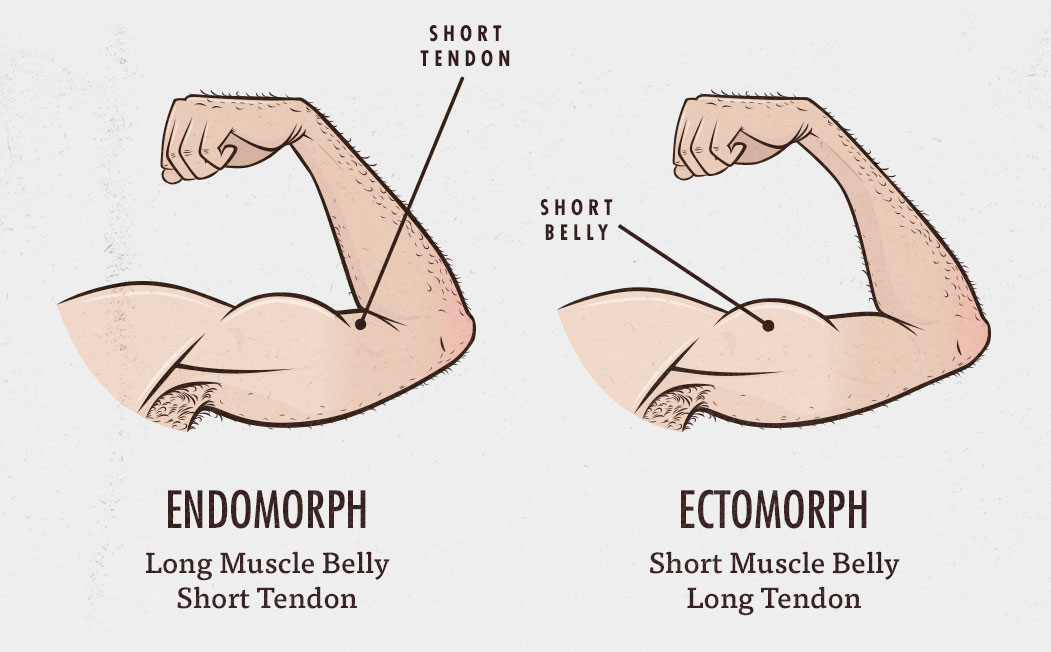

Each can do something the others can’t, so there’s no better or worse type to be. This ratio gives a clue as to which category you might fall into:Įctomorphs, endomorphs, and mesomorphs are like that game of rock, paper, scissors. This is a simple way of making a length-versus-width comparison of the bones in your body. Here’s a quick way to gauge your body type: Take the middle finger and thumb of one hand, and encircle the wrist of the other hand. You might go from an overweight endomorph to a more slender one from a willowy ectomorph to a more contoured one, but the changes you experience will occur relative to your own physiology. Likewise, exercise won’t change your body type. You can be a meso, ecto, or endo of any dress size. Although I have the mesomorph’s capacity to gain muscle and be athletic, my body’s natural tendency is toward thinness.īy the way, other physical characteristics such as height, weight, or fitness level do not affect what type you are. A good pole vaulter, for instance, might be an ecto-meso, since long limbs (ectomorph) are desirable for speed and grip height, while strong upper body muscles (mesomorph) are important in levering the body over the bar. Most of us have traits of at least two types: Usually, we tend toward one while having traces of the others. You hardly ever see anyone who is a perfect ecto, meso, or endo. That, combined with a greater concentration of fat near the middle of the body, makes them more prone to heart disease and stroke. When they’re inactive, their blood pressure and heart rate rise. Although they get into shape quickly and can eat large amounts of calories as long as they stay active, they can also lose muscle quickly and gain fat through lack of training. In general, they excel at strength and endurance activities and, men especially, tend to bulk up when they lift weights.ĭepending on their diet and activity level, mesomorphs can gain or lose weight easily. Mesomorphs are high-energy people, with high levels of adrenaline and an efficient cardiovascular system. They’re medium-to-large-boned, with shoulders broader than hips, short torsos, and a well-proportioned distribution of weight. They’re sturdily built, and their tight, short muscles and strong connective tissue give them a very upright posture, but limit their flexibility. Mesomorphs are nature’s athletes, with hard, muscular bodies and a solid, square appearance. There’s also some evidence that ectomorphs may be particularly susceptible to low back pain and osteoporosis. On the other hand, they have inefficient digestive systems, which helps them to stay thin but may leave them prone to hypoglycemia. They gain muscle slowly and with difficulty.Ī well-developed and efficient nervous system makes ectomorphs highly sensitive and adept at activities requiring speed of movement. What little fat they carry accumulates in the hips and thighs.Įctomorphs tend to have inefficient cardiovascular systems and may have problems with low blood pressure, high heart rate, poor circulation, dizziness on standing, and poor endurance. Proportionately, ectomorphs are fine-boned, with narrow shoulders, a flat chest, and long limbs. Their muscles and connective tissues are loose, allowing more flexibility and mobility than other body types, and this general looseness and lack of muscle makes them more likely to have poor posture. The Ectomorph: Thin, Little Fat or MuscleĮctomorphs have long, narrow, lean, lithe, angular bodies. However, as you read through the descriptions, I’ll bet you’ll be able to relate characteristics of one or more types to yourself or someone you know. Most people don’t fit perfectly into any one type. According to this system, there are three basic types: the slender ectomorph, the athletic mesomorph, and the soft endomorph. Sheldon and provides a convenient way of classifying the structural and performance differences between people. The system of body types (also called somatotypes) commonly used in scientific and medical circles was developed in the 1950s by W.


 0 kommentar(er)
0 kommentar(er)
